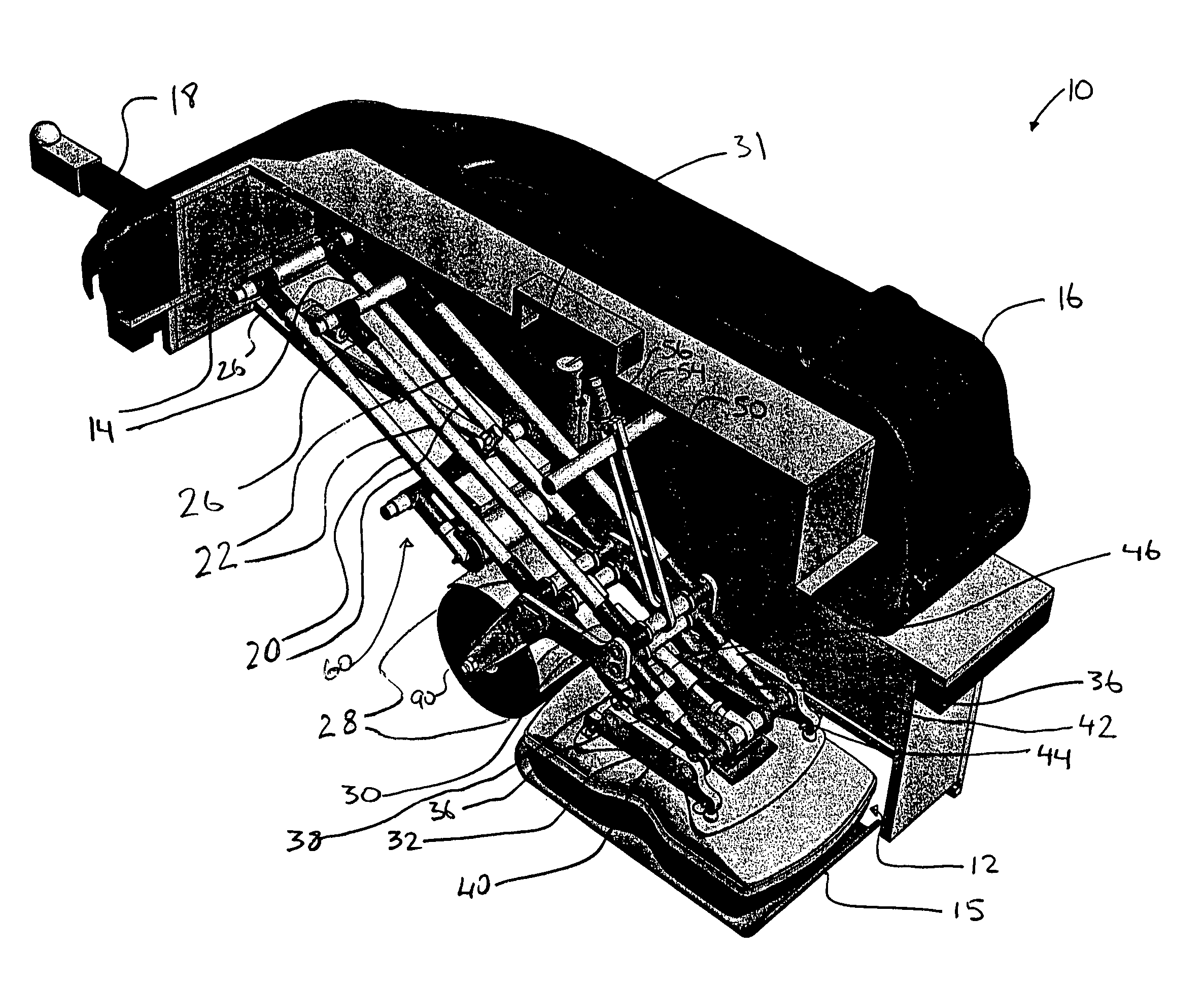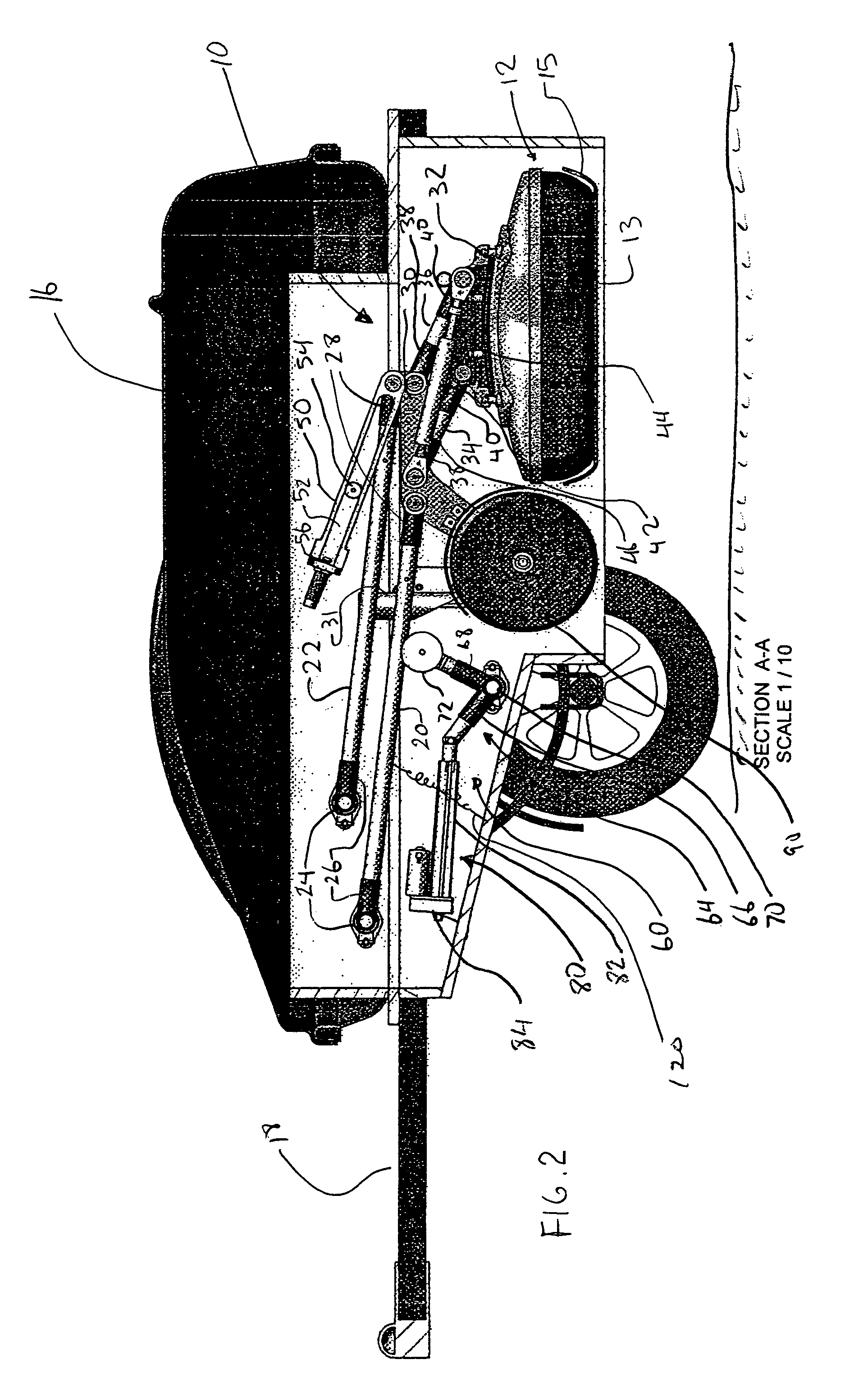Apparatus for transporting a sensor
a sensor and apparatus technology, applied in the field of sensors, can solve the problems that the above described apparatus is not suitable for all subsurface imaging applications, and the cart is not suitable, so as to improve obstacle avoidance, cushion sensor movement, and speed up the effect of speed
- Summary
- Abstract
- Description
- Claims
- Application Information
AI Technical Summary
Benefits of technology
Problems solved by technology
Method used
Image
Examples
Embodiment Construction
[0026]FIGS. 1-6 show an apparatus 10 for transporting and stabilizing a sensor 12, according to a preferred embodiment of the present invention. The sensor 12 is preferably a conventional GPR radar sensor assembly. The sensor 12 includes a planar sensing surface 13 protected by a skid plate 15. When in a deployed position, the sensing surface 13 is positioned at an operational distance d (best shown in FIG. 3) from the target surface 17 (such as a ground or road surface, or a tunnel wall or ceiling) when deployed for imaging. The operational distance d is a function of GPR frequency and actual surface roughness, and may range from about 2 mm to about 20 cm. Typical settings are about 3-10 mm for high frequency sensors and about 10-20 mm for low frequency sensors. It will be understood by those skilled in the art that, for certain applications where the target surface 17 is extremely rough or a lower resolution scan is acceptable, the sensor may be located much higher from the target...
PUM
 Login to View More
Login to View More Abstract
Description
Claims
Application Information
 Login to View More
Login to View More - R&D
- Intellectual Property
- Life Sciences
- Materials
- Tech Scout
- Unparalleled Data Quality
- Higher Quality Content
- 60% Fewer Hallucinations
Browse by: Latest US Patents, China's latest patents, Technical Efficacy Thesaurus, Application Domain, Technology Topic, Popular Technical Reports.
© 2025 PatSnap. All rights reserved.Legal|Privacy policy|Modern Slavery Act Transparency Statement|Sitemap|About US| Contact US: help@patsnap.com



